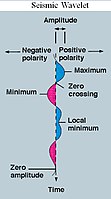
Photo from wikipedia
In this article, we introduce a novel curvelet transform by combining the merits of the well-known curvelet and linear canonical transforms. The motivation towards the endeavour spurts from the fundamental… Click to show full abstract
In this article, we introduce a novel curvelet transform by combining the merits of the well-known curvelet and linear canonical transforms. The motivation towards the endeavour spurts from the fundamental question of whether it is possible to increase the flexibility of the curvelet transform to optimize the concentration of the curvelet spectrum. By invoking the fundamental relationship between the Fourier and linear canonical transforms, we formulate a novel family of curvelets, which is comparatively flexible and enjoys certain extra degrees of freedom. The preliminary analysis encompasses the study of fundamental properties including the formulation of reconstruction formula and Rayleigh’s energy theorem. Subsequently, we develop the Heisenberg-type uncertainty principle for the novel curvelet transform. Nevertheless, to extend the scope of the present study, we introduce the semidiscrete and discrete analogues of the novel curvelet transform. Finally, we present an example demonstrating the construction of novel curvelet waveforms in a lucid manner.
Journal Title: Journal of Mathematics
Year Published: 2020
Link to full text (if available)
Share on Social Media: Sign Up to like & get
recommendations!